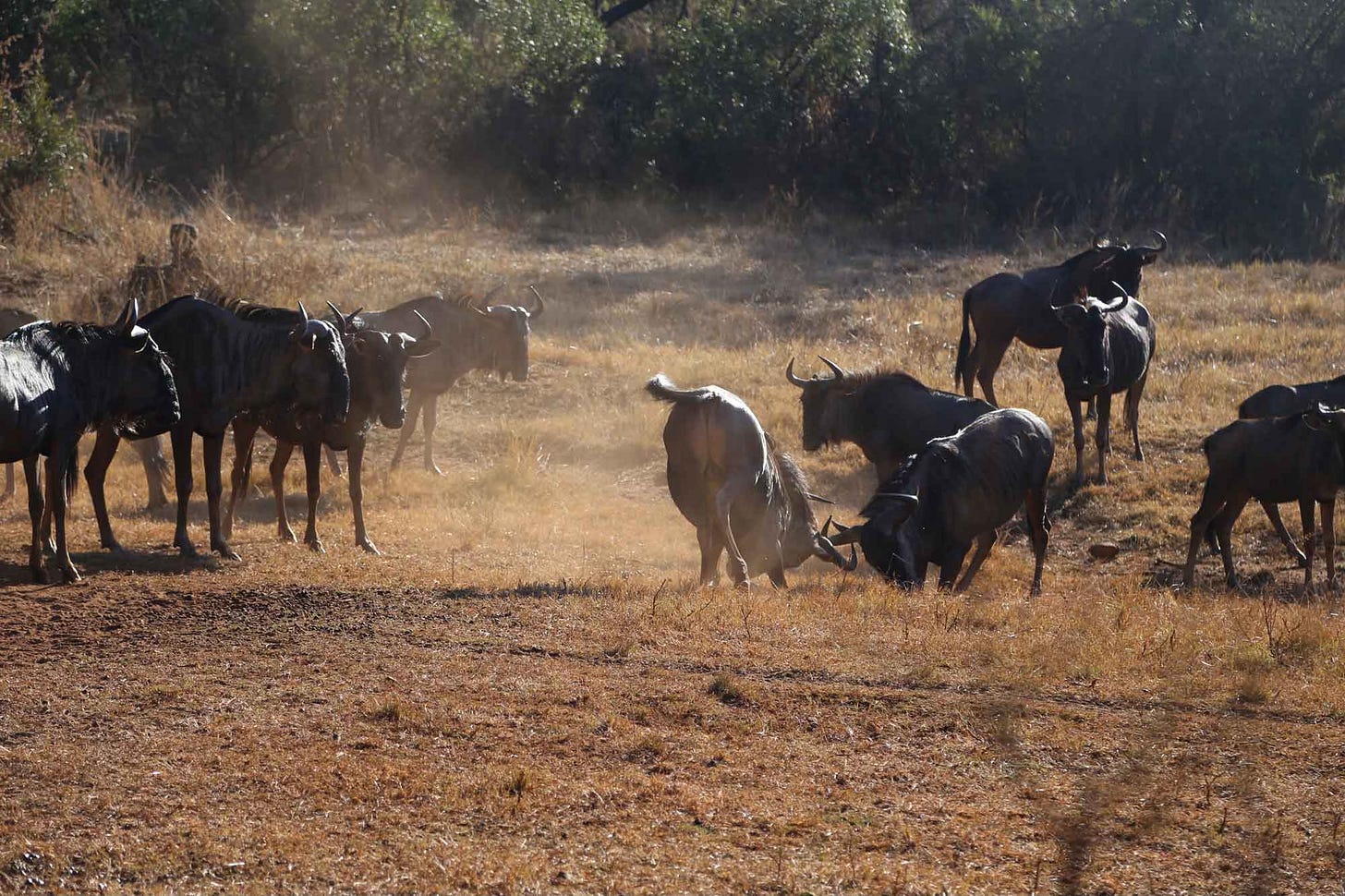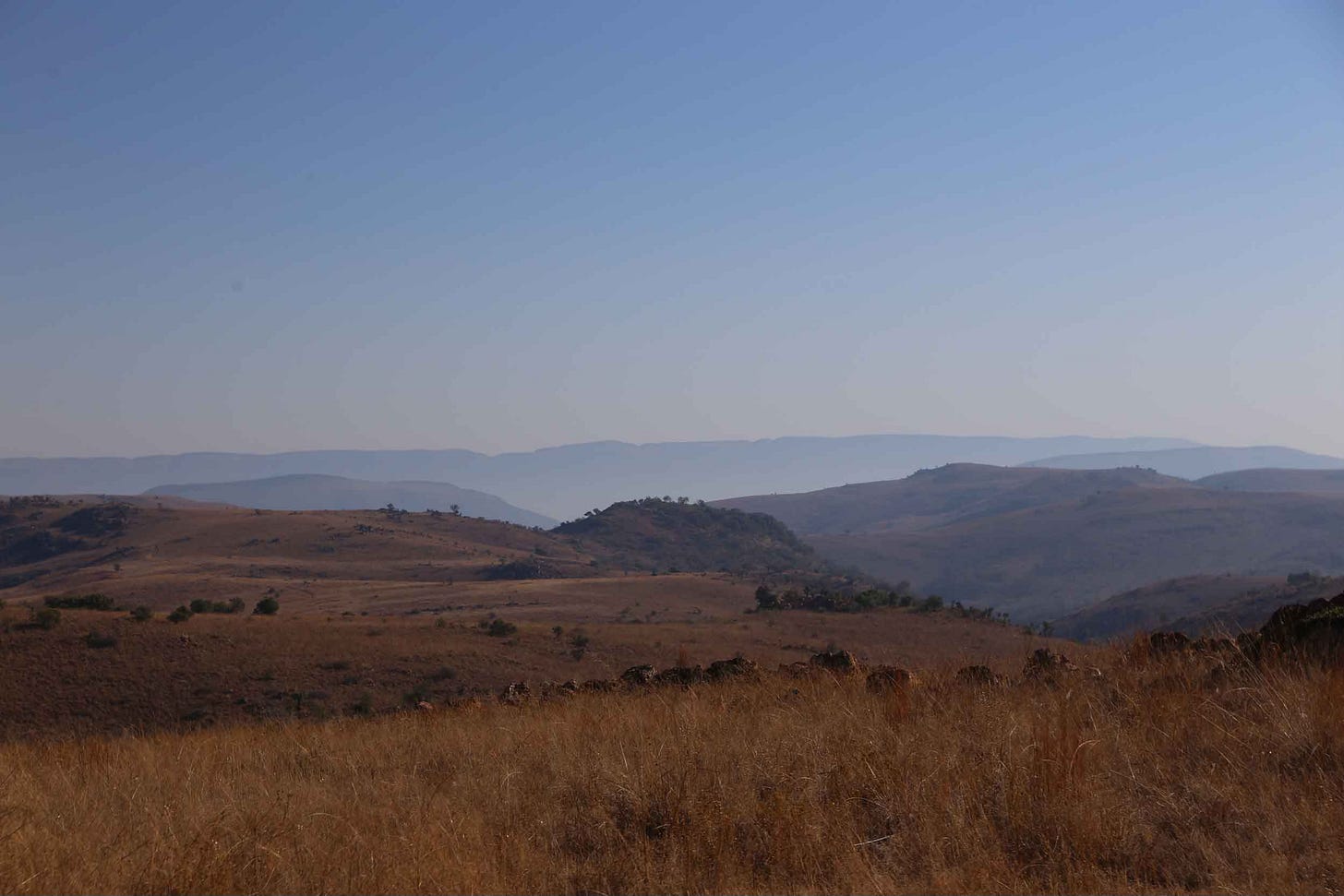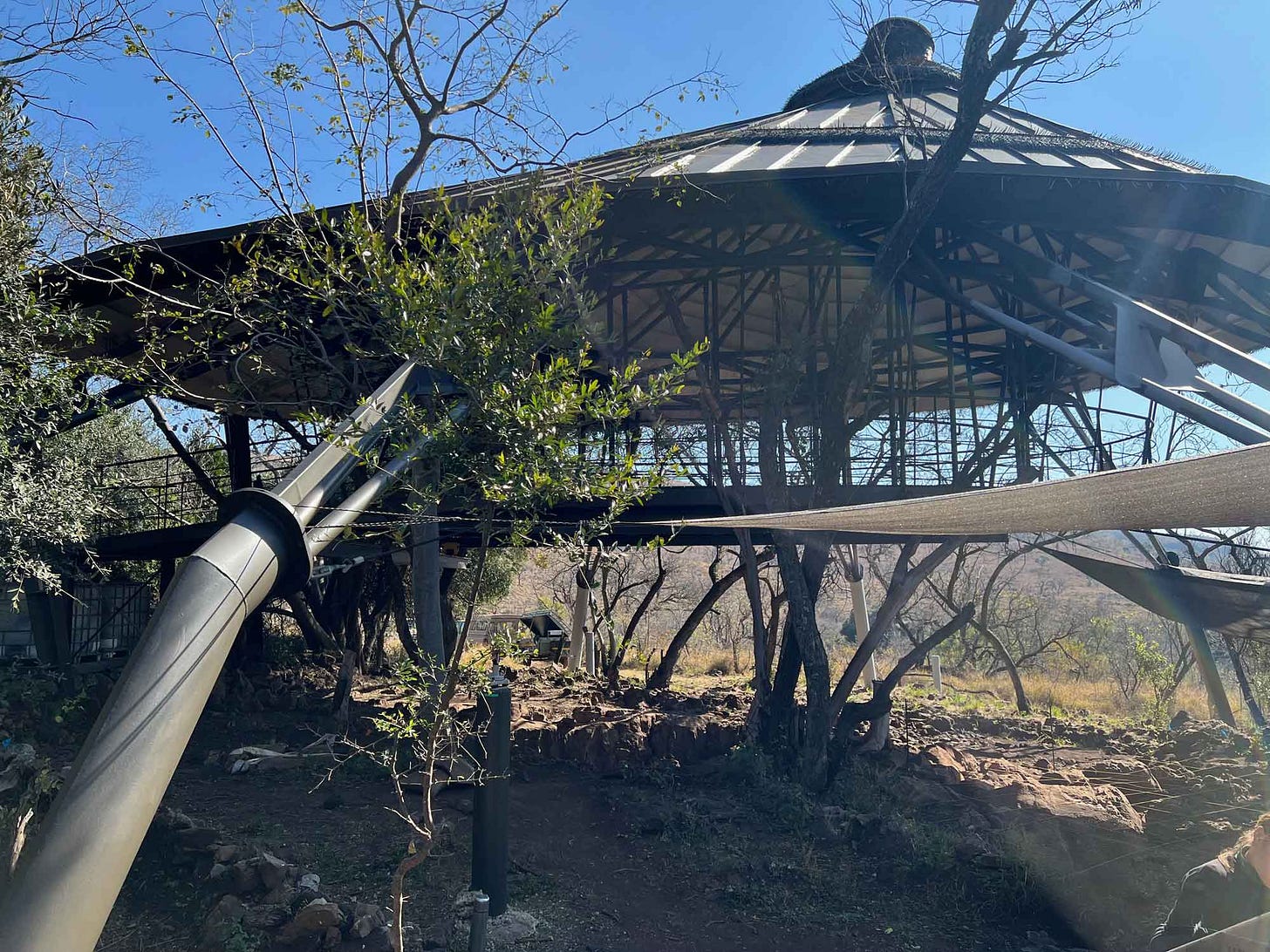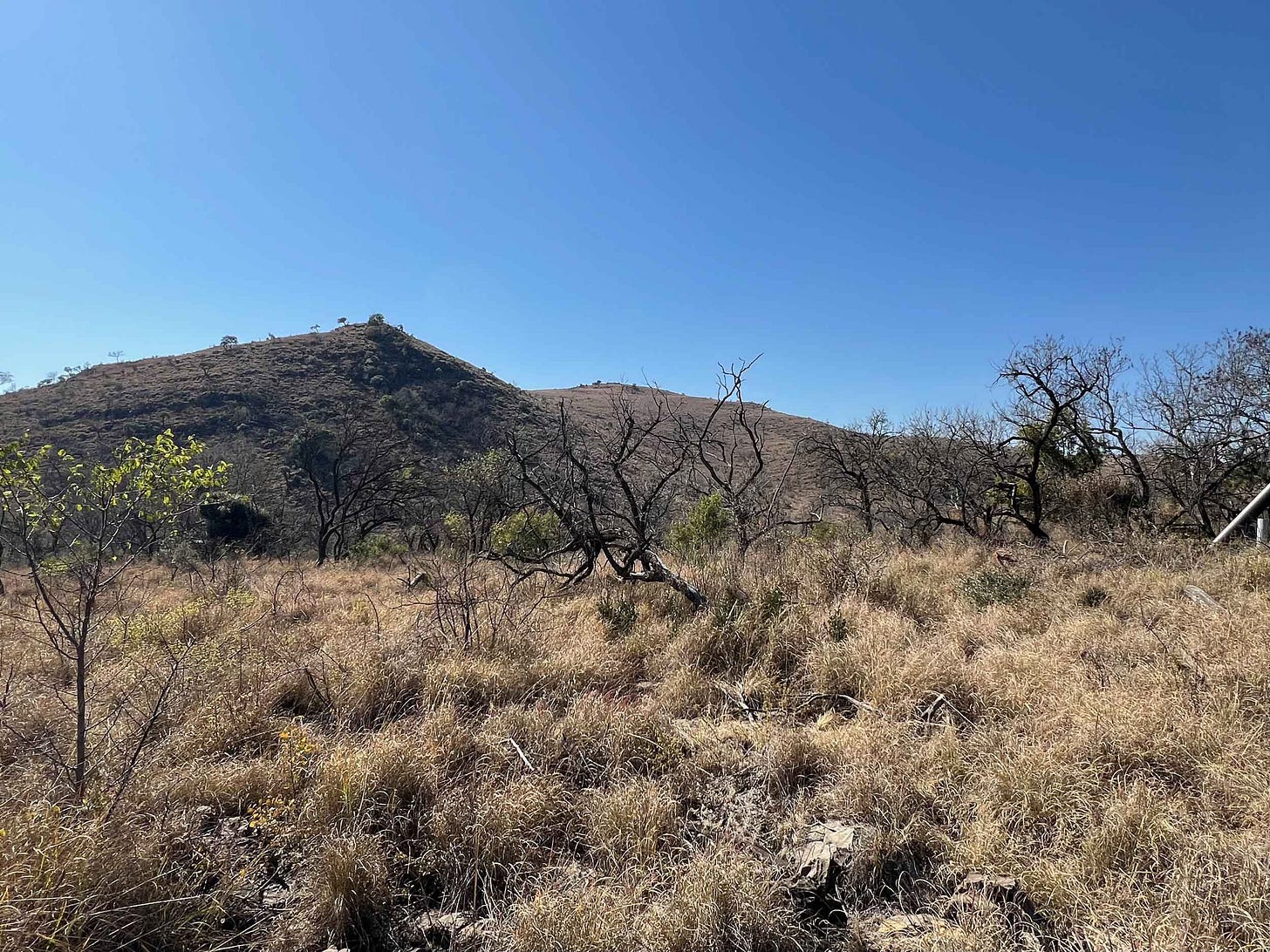A visit to Malapa, ancient site of Australopithecus sediba
A drive into the Greater Cradle Nature Reserve with views of a notable fossil hominin site.
Earlier this week I had the great pleasure of going out the Malapa fossil hominin site. I thought I would share some photos of the site and its surroundings for readers.
Malapa sits within the Greater Cradle Nature Reserve, a 9000-hectare protected area outside Johannesburg, South Africa. The reserve is a relatively short drive from the center of Johannesburg, only around 50 minutes to the entrance if traffic is light. But within the reserve the site is several kilometers away from any of the main roads and is accessible only by 4-wheel-drive vehicles.
We arrived at the Umsuka research village on the reserve around 8:00 am. It was a beautiful morning with bright blue sky, cold in the South African winter. The trip from the research village up into the reserve is around 30 to 45 minutes.
It’s a great drive, often with remarkable viewing of the many mammals and birds that inhabit the reserve. Early in the morning as we left the field station, some wildebeest were putting on a little tussle.
Many of my readers will know the story of the first fossil discovery from the site, made in 2008, when Matthew Berger found the clavicle of an early hominin. This would turn out to be the first bone of the MH1 skeleton. Within two years, skilled preparators extracted the skull and many other elements of the skeleton from the hard rock. We told the story of this discovery in our 2017 book, Almost Human.
Lee Berger and coworkers recognized a number of differences across the skeleton from other known species at the time, and in 2010 they named the species Australopithecus sediba. The MH1 skeleton rests today in the fossil laboratory at the University of the Witwatersrand.

Getting up into the hills of the reserve in the early morning revealed a hazy view of the Magaliesberg range to the north. Those low mountains are formed from ridges of erosion-resistant hard quartzite. They form a watershed barrier to the north and ultimately funnel the drainage from the Cradle and surrounding landscapes into the Crocodile River.
In the foreground are the valleys of the reserve, each fed by natural springs with streams that cut down into the dolomitic limestone that forms the bedrock of most of the reserve. The bedrock formations of this region date to the Precambrian era more than 2 billion years ago. Fossil stromatolites in the rock witness to this ancient time, when mats of algae were close to the apex of Earth’s lifeforms.
This dolomitic limestone is the host rock of the many caves of this region. The entire landscape is really alive with cave formation processes. Caves form deep underground due to the action of groundwater, which can dissolve cavities often following natural fractures from faults.
The limestone that is now on the surface spent most of its 2 billion year history buried deep beneath younger geological formations. Sometime after around four million years ago, the slow but relentless erosion of overlying layers at last exposed the limestone to the atmosphere. Where only hidden underground chambers had once existed, now caves became open to the surface. Living creatures entered, using the caves for shelter, for cool in the summer and warmth in the winter, safe places to keep babies, cubs, and kits, places to stash prey. Bones and bodies, insects, leaves, and sediment from the land surface around the entrance built up into deposits.
Piles of dirt, bone, gravel, rock, plant debris, and other material that have entered a cave can go nowhere but downward. The dripping and seepage of rainwater though the overlying cave ceiling may deposit calcium carbonate into these piles of stuff, cementing them into a hard formation of rock. Flowstones, stalactites and stalagmites form around them.
The dripping of rainwater also erodes the cave itself. Ceilings collapse, leaving rockfalls and roof blocks in their wake. Floors, too, become unstable and collapse down into lower chambers, taking with them fossils and artifacts. Sinkholes open on the surface, sometimes forming open amphitheaters where once there had been yawning caverns.
On the reserve, springs feed streambeds that sometimes disappear again into the Earth. The one on the way to Malapa is the most drivable path for a few hundred meters, until it meets a sinkhole.
The Malapa fossil site is what I would call a former cave. Situated within a gradually sloping valley, the most obvious feature of the site today is a pit of around 5 meters diameter and depth. It is not impressive. On the landscape in 2008 it was barely noticeable. Only the cluster of trees near the site hinted from a distance that there was a break here in the hardscape of the dolomite land surface.
The site today is marked by a special structure that protects the remaining fossils and deposits from direct rainfall and helps facilitate work and tourist access to the site. The design of the structure won many architectural awards for its combination of function and environmental responsibility. A walkway floats above the site where visitors can watch the work underway and learn about how scientists are uncovering the hominin past on the reserve.
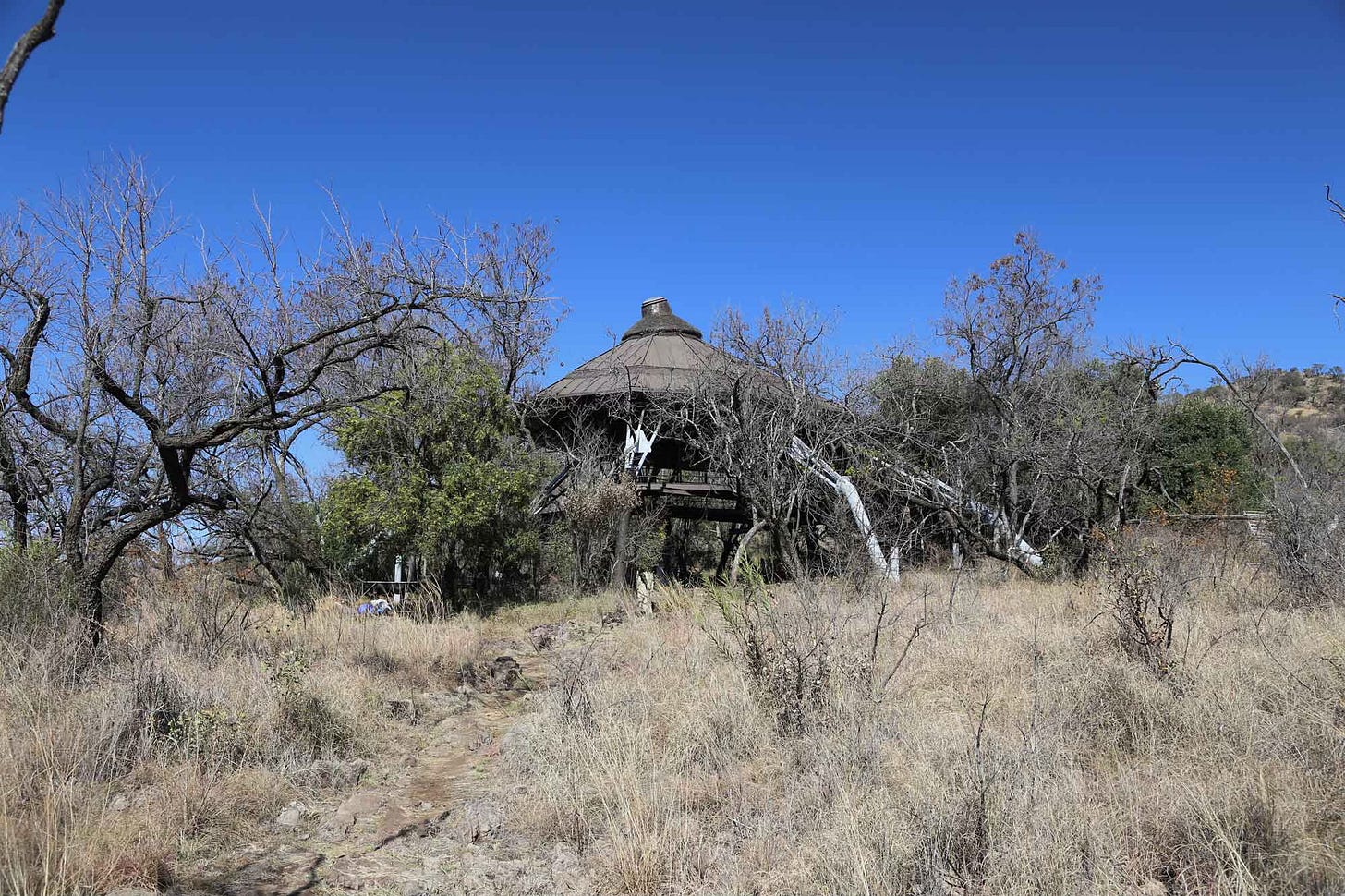
Regular tours of the Greater Cradle Nature Reserve can be booked, which include a guided game drive and visits to the fossil sites on the property including Malapa and Gladysvale Cave. The tours are a unique experience combining wildlife, conservation and prehistory and highly recommended. Last time I was in the reserve I encountered a family from the Madison area who were taking in the fossils after returning from Kruger National Park. What a coincidence!
The fossils of Australopithecus sediba are thought to be around 2 million years old, and they represent one of the closest relatives to our genus, Homo. In addition to the MH1 skeleton, there are other hominin individuals—especially the MH2 skeleton of a female adult—and a wide array of other species. Across the first decade of exploration of the site, the work centered on the recovery of the MH1 and MH2 skeletons.
That work has continued with the work of highly skilled preparators, especially Zandile Ndaba, who has spent the last two years bringing new parts of MH1 out of a massive block. The story of that work and what the fossils may reveal is ongoing, as teams of scientists are building datasets that may help complete our picture of this ancient species.
In the meantime, archaeological work is underway at the site full time during the week. The current work is helping to outline the full remaining extent of the ancient cave, probing deposits of cave sediments that were buried invisible just beneath the land surface surrounding the pit. The site has been part of an evolving landscape since Au. sediba lived here. Understanding this landscape, probing the rich fossil deposits in the center of the site, and extending knowledge of the fossils' context is a massive undertaking.
The site visits and associated Malapa Museum tell the story of the discoveries and the ancient world of Australopithecus sediba. The reserve is full of a wide variety of wildlife and birds, and while the weather in this winter season is dry, it’s beautiful and sunny nearly every day. In the spring the rains will come, the streams will fill, and water once again will be percolating downward to change other caves in the area.



